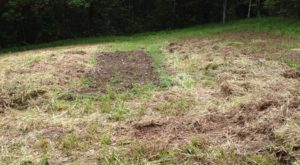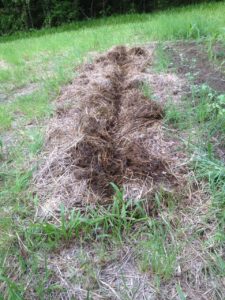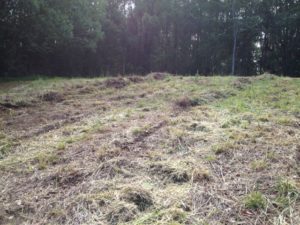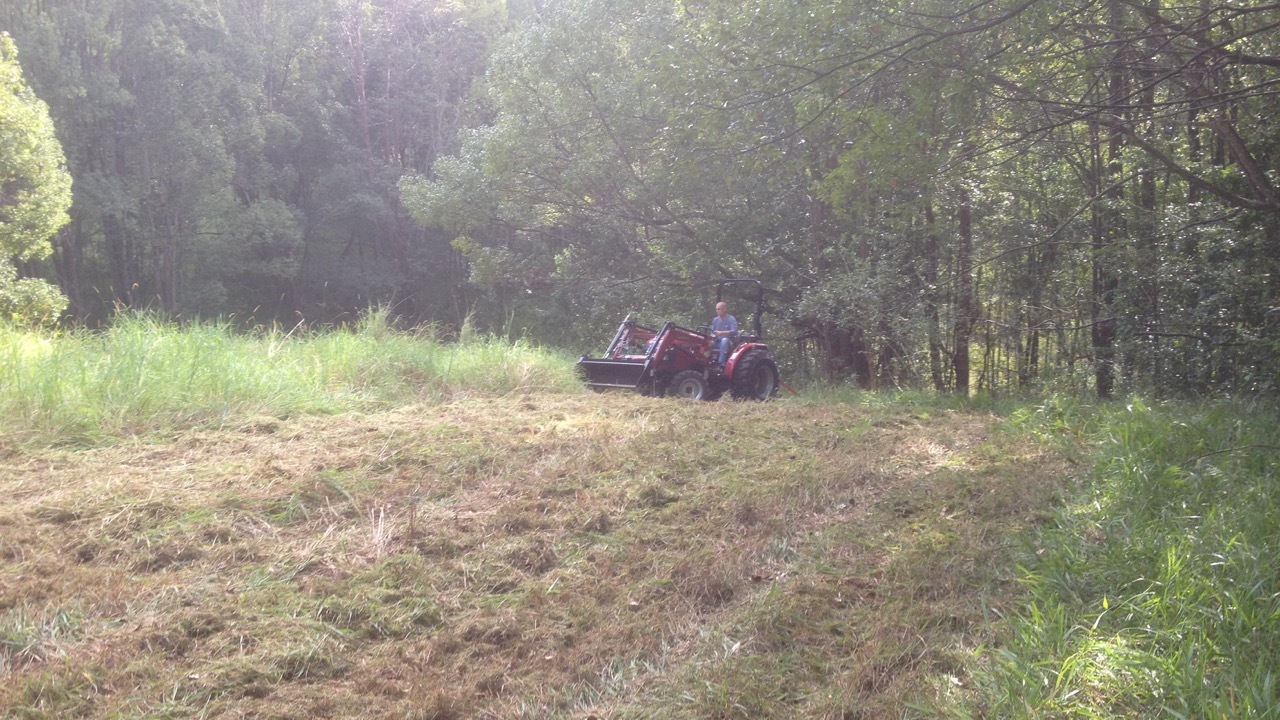No-dig beds are a great idea, incorporating easy establishment of new garden beds with minimal disturbance to the soil.
Permaculture, intensive horticulture, organic gardening; there are plenty of techniques to follow in your garden, and a purist might decide on one, rigorously apply it, and actively defend or promote it. I’m more interested in what works, and if that means different techniques for different spots, then great.
Background
I’ve been reading a little about no-dig beds. There are quite a few exponents, including well known locals like Esther Deans, and going back to Masanobu Fukuoka and beyond, but it is Ruth Stout‘s system that seems to suit my conditions best in theory.

No-dig beds ideas seem to be mainly based on backyard growing- a great method for covering lawn or hard soil, and these involve the lasagne method of layers of paper, straw, compost and manure. Ruth Stout’s method involves just putting down a thick layer of hay and leaves, letting it compost for a while, then sowing or planting in rows where the compost is narrowly pulled away.
Why does it suit us here? Firstly we have this abundance of hay, and until we get some grazing animals we will be slashing it regularly. I’ve never seen grass grow as tall or as quickly. Secondly the land is hilly, and I have nightmares about it all washing down hill in the big rains when it’s cultivated. Thirdly I’d rather not be hoeing contour plots if there’s an alternative. And also the soil here has excellent structure, so leaving the roots and worms in place seems a good idea.

Building no-dig beds
The no-dig beds I began this morning are in a small paddock I’ve called the ‘Low Levels’, further down hill from the ‘Mid Levels’ and rather beautifully fringed by rainforest. I trialled a row of cover crops from Winter, where I scraped most of the grass off with the tractor, then laboriously hoed rows, but the fenugreek, buckwheat, millet and sunflowers I tried there all failed in our exceptionally dry Winter and Spring. Just over a week ago I re-sowed it with Lablab beans and Red Aztec maize, which are doing nicely. You might just be able to make them out in the main photo; beans to the outside and two rows of maize inside.
As Bill got down and slashed the rest of the paddock a few days ago, this morning we went down and raked up the hay, then set it in two rows either side of the old bed.

Here’s the hay partly raked into windrows ready for bringing to the top where the beds are. The Low Levels seems like a good spot for the system, as it slopes away from the level area and will probably be too steep to plant in terraces, but the downhill section produces hay for the top, and the forest all round drops leaves that can add to the mix.
Next
I will leave the two rows of hay to compost for a couple of weeks, possibly less in this warm wet weather, then see whether the pasture grass underneath is likely to take over. Interestingly, it doesn’t seem to grow through the hay elsewhere, which is why raking the hay promotes a more even cover. Ruth Stout says you just keep adding hay as it rots down. Then I’ll think about sowing – Lablab beans seem a good cover crop here and would add nitrogen for the next crop. I’ll try not to get impatient.

